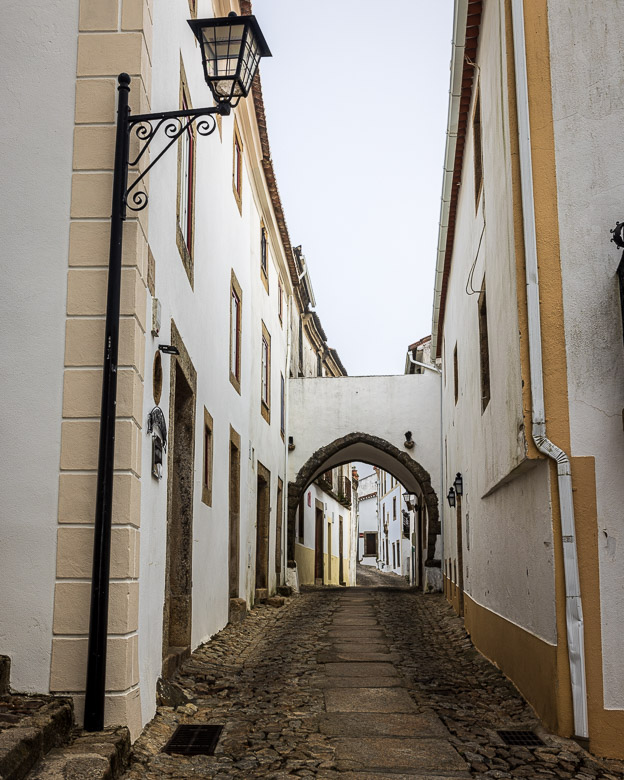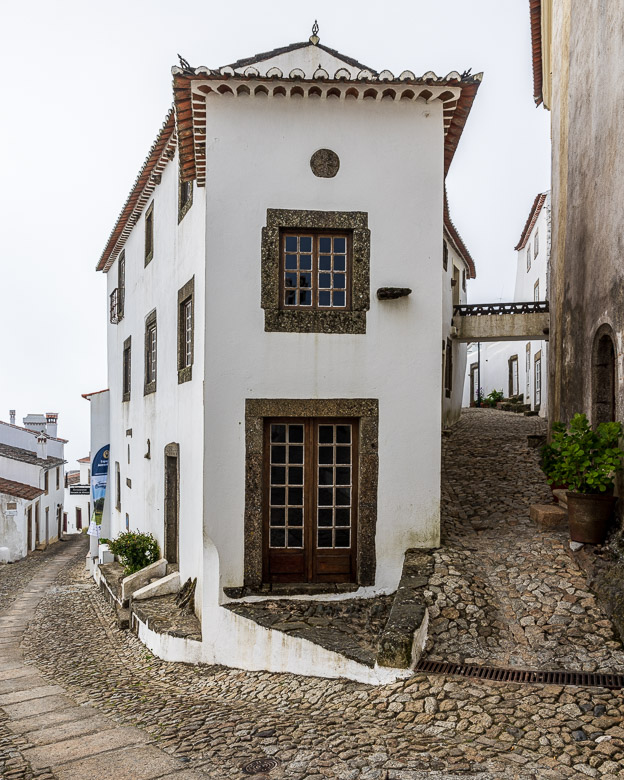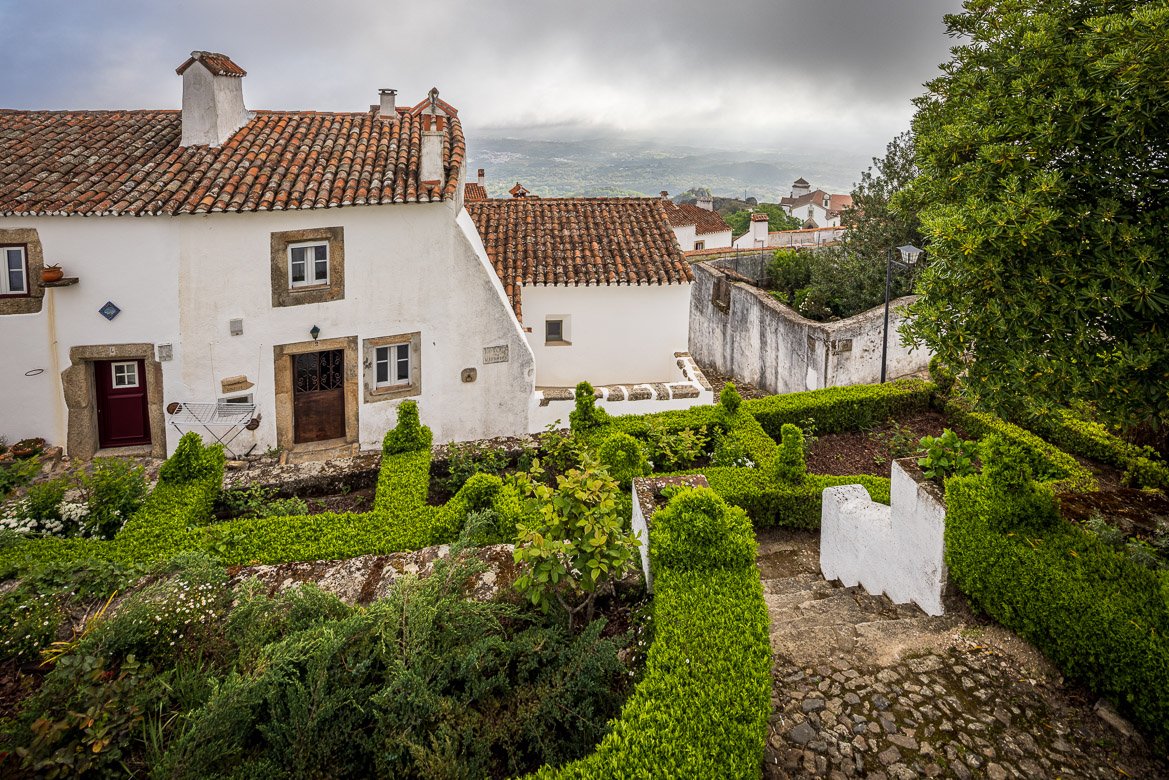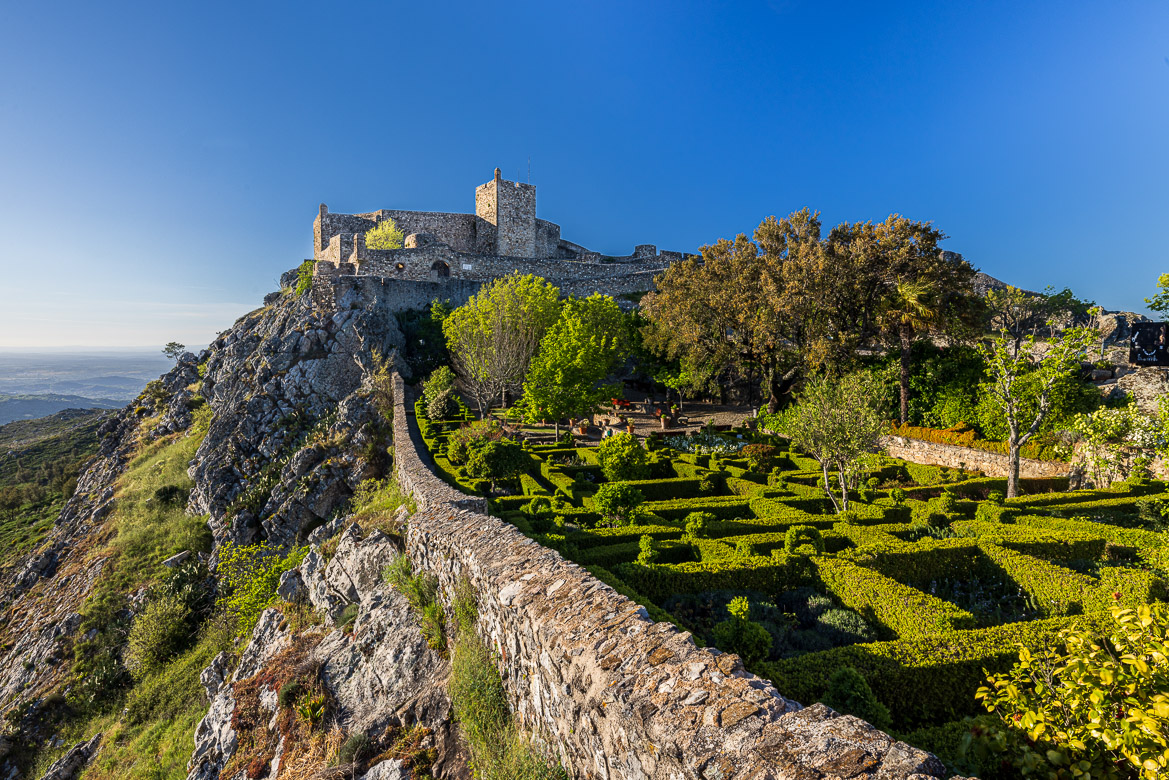
Marvão is situated on the highest point of a ridge rising nearly a thousand metres above the landscape below. It is the highest town in Portugal. It has around 3,000 inhabitants (reduced by an average of 1 person per week!). The consolidation of Roman power led to the formation of a Roman town there in the first century AD, Ammaia. The Roman town had around double the number of inhabitants that the present Marvão has.
Marvão’s name is derived from a Moorish rebel, Ibn Marwan, who constructed the first castle. It was concquered by the Christian king Alfonso I in 1160, but it was the Christian victory over the Almohads at Navas de Tolosa in 1212 – leaving more than 100,000 Moors dead – that finally secured the area and firmly established Marvão as a Christian stronghold.
The main focus of this delightful village is the castle which rising from the rock on which it is built. It affords breathtaking views all around. To the south you can see the beautiful town of Estremoz (see previous post) and to the northwest is Castelo de Vide (see the next coming post). And to the east not many kilometres from Marvão is the Spanish border.
Marvão is, together with Monsaraz to the south and Monsanto to the north, the most beautiful hilltop border towns of Portugal. Monsaraz has been described in two earlier posts and I will post photos from Monsanto in the near future.
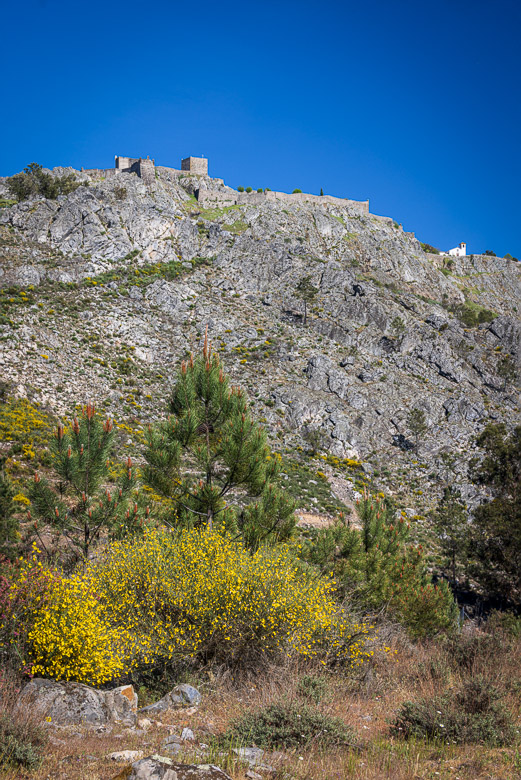
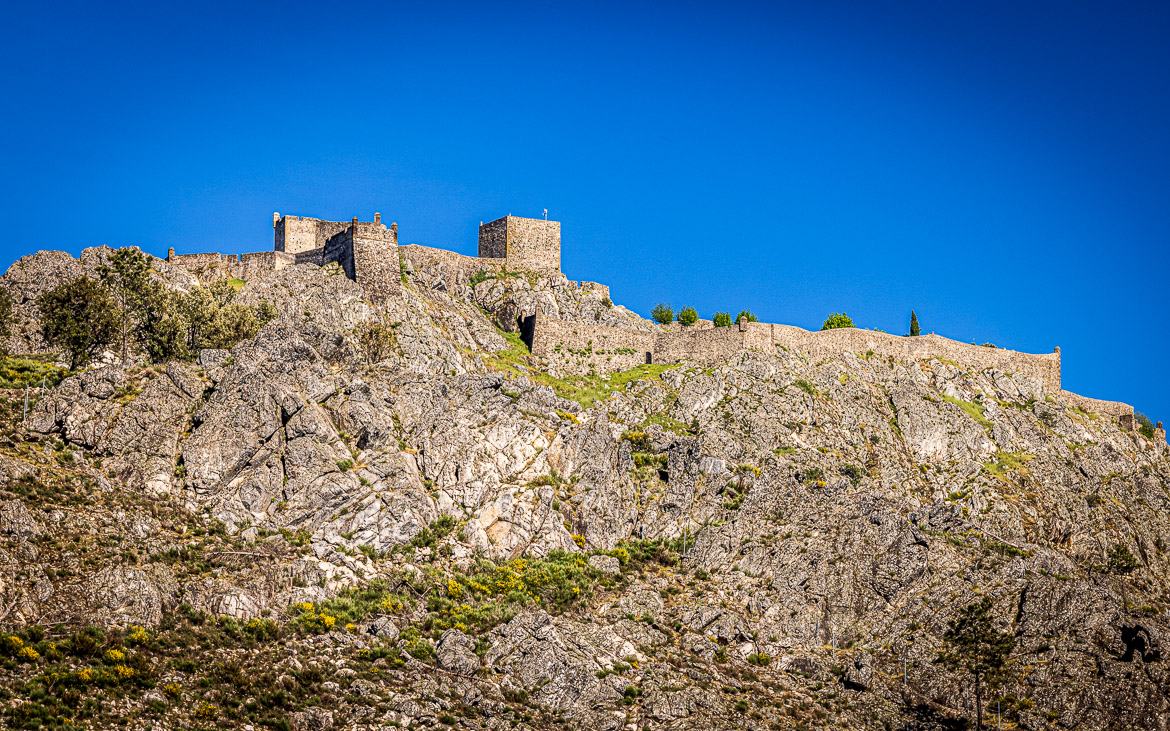
Below the caste but still high up on the mountain ridge the town is spread out. White-washed buildings with red roofs and cobble-stoned streets and lanes makes it very beautiful, especially so at sunset. We stayed at Pousada de Santa Maria, which was created by merging a series of houses. The view from its restaurant over the surrounding countryside, more than 800 metres below, was breathtaking. Driving up to the hilltop town was exhilarating, but driving into the town through the town gate was even more so. The gate was designed to stop the enemy from attacking, and it nearly stopped me from getting through. And only a few of the streets were wide enough to allow a car to pass and only after we closed the side mirrors of the car. But we made it all the way to a parking spot next to the Pousada!
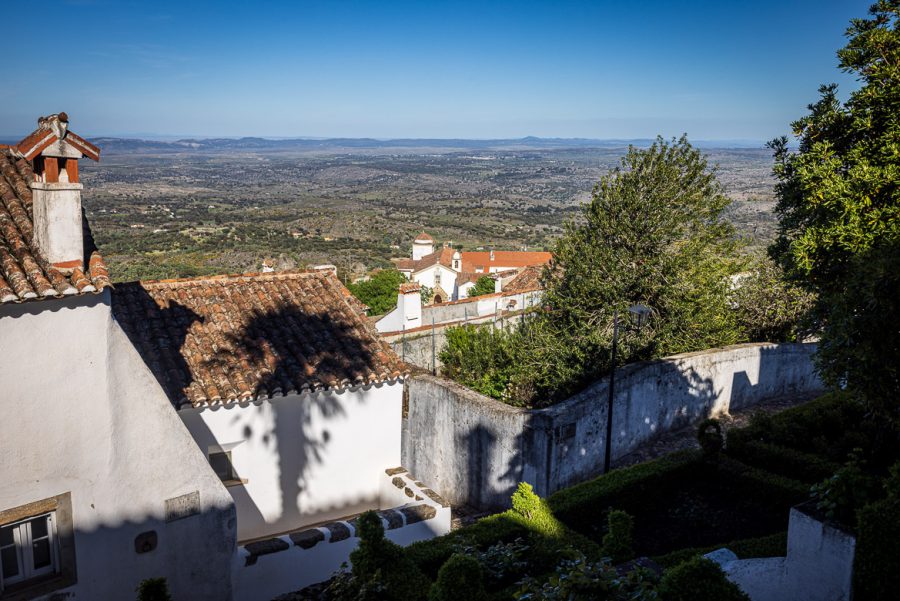
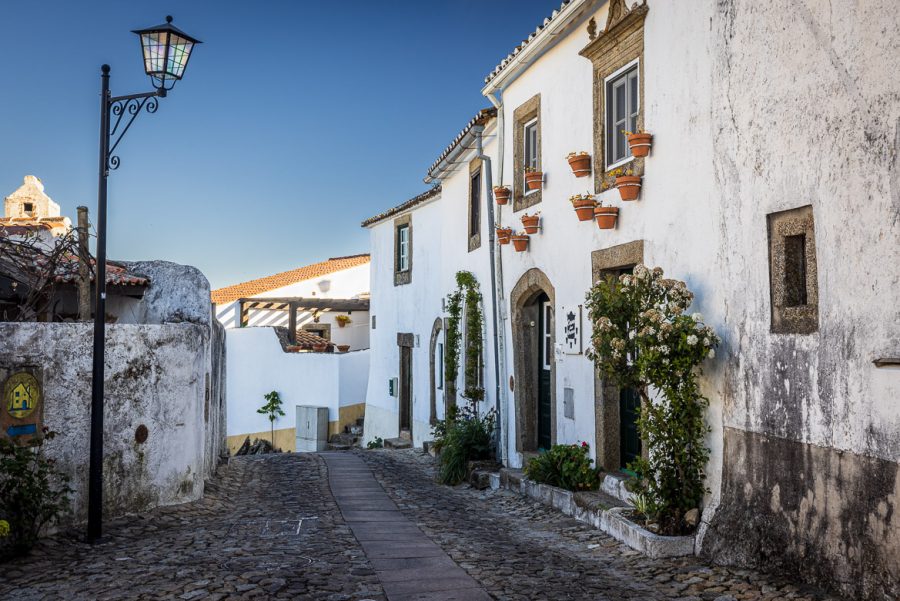
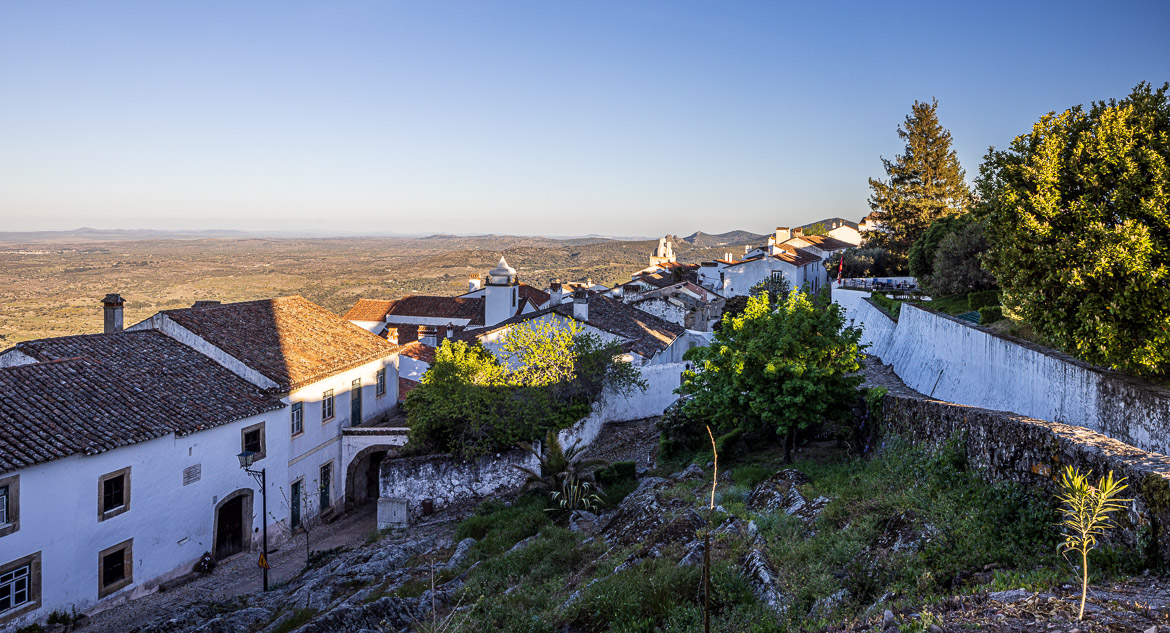
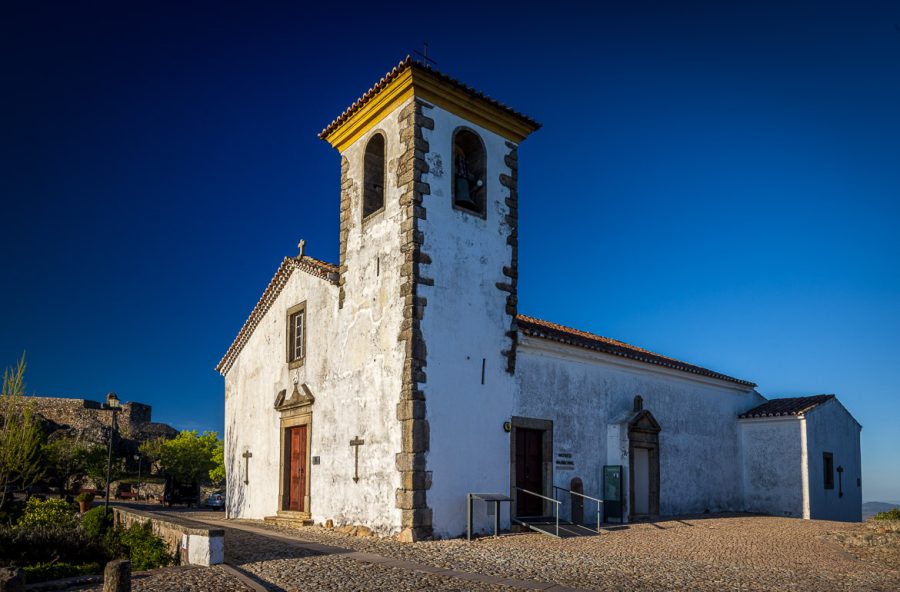

Marvão’s vivid colours at sundown comes from the reflected light from the feldspar and quartz in the granite mountain and from the same boulders that have been used to build the Castelo de Marvão.
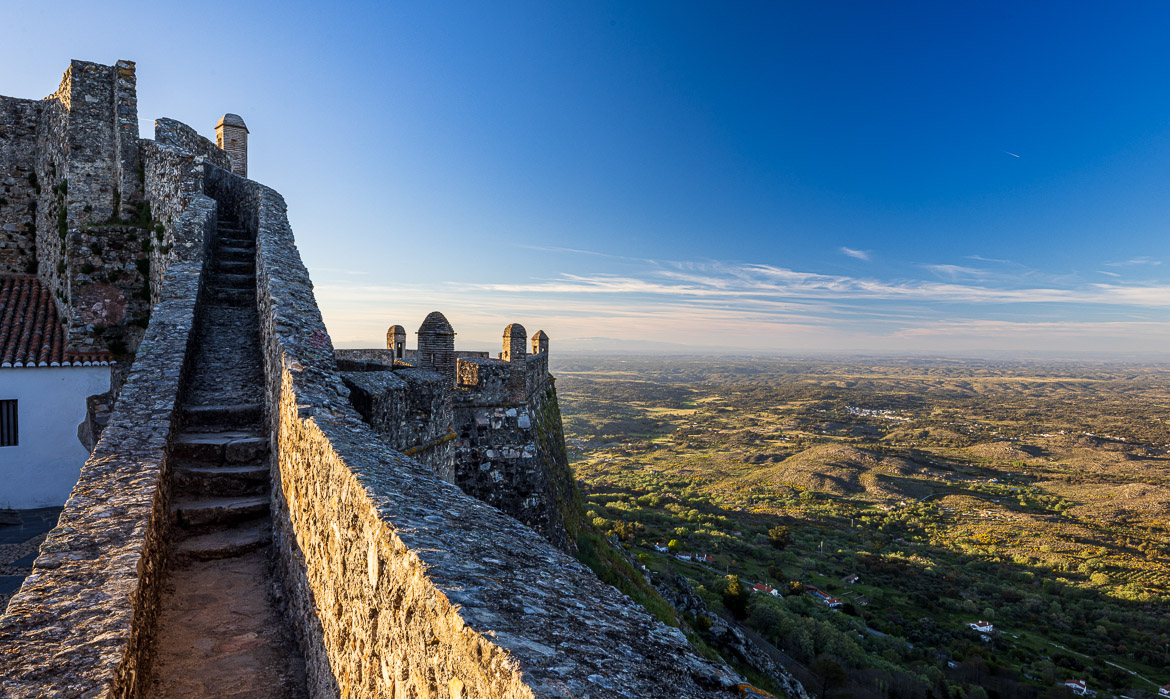
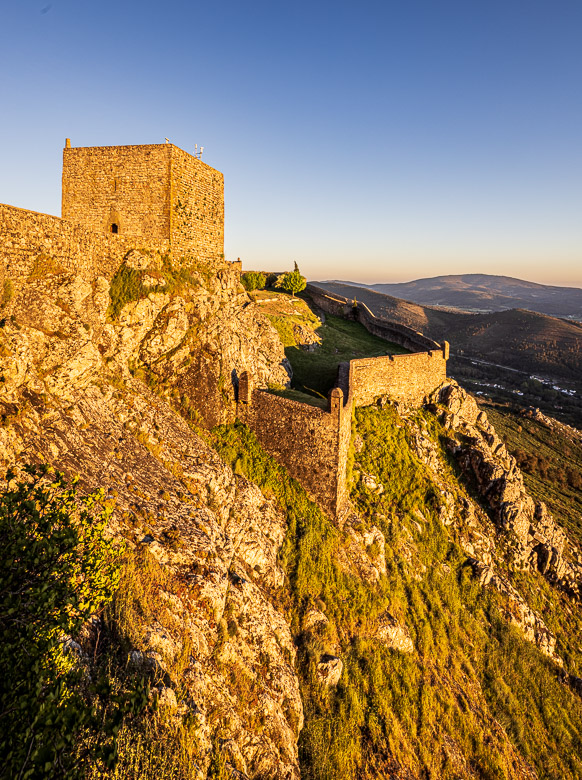
I was out all evening to capture the light and went out again in the morning. But then morning clouds enveloped the whole town and everything was grey, although giving it a sense of mystery. Both morning and evening I was nearly alone walking in the town. I met an occasional dog owner walking with the dog
